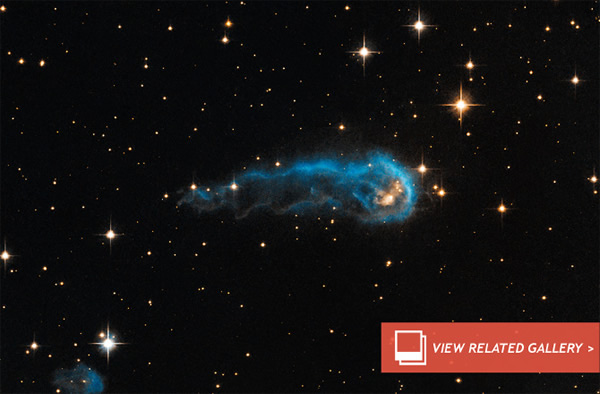Hubble Captures Cosmic Caterpillar
Hubble Captures Cosmic Caterpillar
The Hubble Space Telescope has seen some strange objects in deep space, and this is another fascinating celestial object that sparks the imagination. Resembling a caterpillar (or, perhaps, a leach or a worm… or a fish), this one light-year long cloud, some 4,500 light-years away in the constellation Cygnus, is in fact the eroded cocoon of a baby star.
Known as IRAS 20324+4057, this particular star-forming cloud of dust and gas is undergoing a violent start to its stellar life. The long “tail” is being created by powerful stellar winds blasting from some of the most massive stars found in the Universe. In this observation from Hubble Advanced Camera for Surveys (plus Hα data from the Isaac Newton Telescope), the brightest stars to the right of the imnage are these O-type behemoths, producing strong stellar winds and powerful radiation pressure. The collection of stars in this region, known as the Cygnus OB2 association, is a rough neighborhood for a star to be born.
The bright “head” of IRAS 20324+4057 is where the protostar is forming, but huge quantities of its nebulous material is being eroded away. Although the star is undoubtedly undergoing the initial stages of star formation, astronomers do not know how large it can grow. Will the neighboring stars blow away the bulk of the star-forming material, preventing it from accreting under gravitational collapse? We’ll have to wait a long, long time to find out.
Image credit: NASA, ESA, the Hubble Heritage Team (STScI/AURA), and IPHAS(Aug 30, 2013 01:51 PM ET // by Ian O'Neill)












